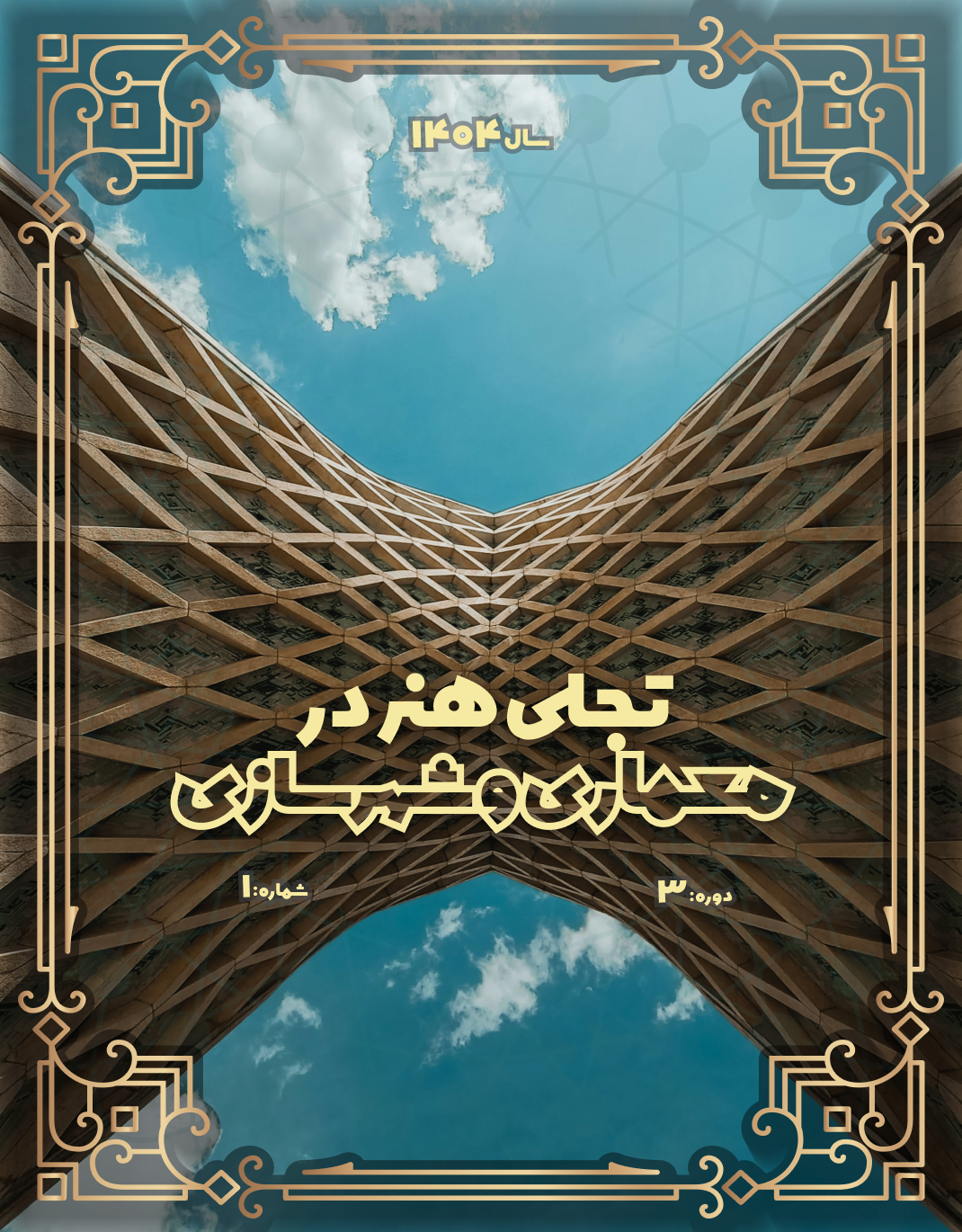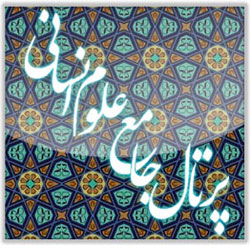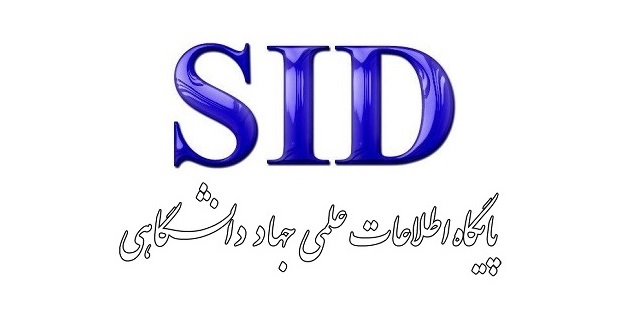Explanation of Landscape Architecture Indicators Affecting the Visual Environment Quality Enhancement in Urban Parks of Tabriz Metropolis from Ecological, Cultural, Environmental Sustainability, and Accessibility Perspectives
Keywords:
Park, visual environment, Cultural characteristics, Environmental sustainability, AccessibilityAbstract
Parks, as integral components of urban fabric and part of public urban services, hold significant importance and cannot be separated from the needs of the urban society. Therefore, parks must be developed both quantitatively and qualitatively in accordance with the city’s physical scale, community needs, ecological conditions, and its future expansion trajectory so they can function as active green spaces with continuous environmental returns. This study aims to explain the landscape architecture indicators that influence the enhancement of visual environment quality in urban parks of the Tabriz metropolis, from the viewpoints of ecology, cultural characteristics, environmental sustainability, and accessibility, using a descriptive-analytical method. The findings reveal that El Goli Park is identified as the top-ranked park in terms of ecological indicators. Shams Tabrizi Park, due to its traditional and principled design, is another favorable option. Other parks require further actions in resource management and biodiversity enhancement. El Goli Park and Baghlari Baghi demonstrate appropriate physical and social accessibility, serving as successful examples for other parks. Shams Tabrizi Park is particularly effective in terms of social accessibility for specific groups such as women and children. Baghmisheh and Khaghani Parks need improvement in accessibility for individuals with disabilities and require reconstruction of access routes. Eram Park can achieve better performance in accessibility by improving lighting and increasing nighttime security.
Downloads
References
1. Akbari O. Evaluation of the Spatial Distribution Suitability of Urban Parks in Tabriz from the Perspective of Influence Zones Using Remote Sensing and GIS. Renewable Natural Resources Research. 2021;12IS - 1:83-94.
2. Taghavi SH, Norouzian Maleki S, Alidoost S. The Role of Daily Landscape in the Quality of Urban Spaces: Case Study of the Dormitory Pathway for Female Students at Shahid Beheshti University. Safar. 2017;26(27):55-72.
3. Abdelhamid MM, Elfakharany MM. Improving urban park usability in developing countries: Case study of Al-Shalalat Park in Alexandria. Alexandria Engineering Journal. 2020;59(1):311-21.
4. Abraham A, Sommerhalder K, Abel T. Landscape and well-being: a scoping study on the health-promoting impact of outdoor environments. International journal of public health. 2010;55:59-69.
5. Akpınar A. How perceived sensory dimensions of urban green spaces are associated with teenagers' perceived restoration, stress, and mental health? Landscape and Urban Planning. 2021;207.
6. Naroui, Yel. Evaluation of Visual Preferences and Aesthetic Perceptions of Users Regarding Urban Park Landscapes (Case Study: Sayyad Shirazi Urban Park in Birjand). Human and Environment. 2021;19(2):201-19.
7. Montazerolhoda, Sharifnejad. Factors Influencing Users' Perspectives on the Environmental Quality of Public Recreational Spaces: Case Study of Parks in Yazd. Urban Studies Quarterly. 2016;5(20):17-28.
8. Bahriny F, Bell S. Patterns of urban park use and their relationship to factors of quality: A case study of Tehran, Iran. Sustainability. 2020;12(4):1560.
9. Bayatmaku S. Biophilic Design Efficiency on Humans' Well-being in Daily Life with an Atmospheric Approach 2022.
10. Bazrafshan M, Tabrizi AM, Bauer N, Kienast F. Place attachment through interaction with urban parks: A cross-cultural study. Urban Forestry & Urban Greening. 2021;61.
11. Marouf M, Hatemzadeh A, Kaveh H. Improving the Landscape of Urban Parks Based on Citizen Needs (Case Study: Parks in Gorgan). Sustainable Architecture and Urban Planning. 2021;11IS - 3:197-207.
12. Sadeghi Z, Alidoosti Masouleh S, Bamanyan M, Haghighatbin M. Assessment of Cultural Ecosystem Services Perception in Parks with Different Landscape Styles (Case Study: Urban Parks of Tehran) Using Space Syntax to Analyze Behavioral Settings: Case Study of Neighborhood Parks in District 5 of Tehran Municipality. Geography and Urban Planning. 2022;11(3):2-24.
13. Hami A. Evaluation of Urban Public Landscape Quality Indicators. Environmental Planning. 2021(55).
14. Harnik P. Urban green: Innovative parks for resurgent cities: Island Press; 2012.
15. Mell IC. Green infrastructure: concepts, perceptions and its use in spatial planning 2010.
16. Jim CY, Chen SS. Comprehensive greenspace planning based on landscape ecology principles in compact Nanjing city, China. Landscape and urban planning. 2003;65(3):95-116.
17. Hansen G. Basic principles of landscape design. Florida: University of Florida; 2010. 1-12 p.
18. Dinda S, Ghosh S. Perceived benefits, aesthetic preferences and willingness to pay for visiting urban parks: A case study in Kolkata, India. International Journal of Geoheritage and Parks. 2021;9(1):36-50.
19. Escalera-Reyes J. Place attachment, feeling of belonging and collective identity in socio-ecological systems: Study case of Pegalajar (Andalusia-Spain). Sustainability. 2020;12(8):3388.
20. Deng L, Li X, Luo H, Fu EK, Ma J, Sun LX, et al. Empirical study of landscape types, landscape elements and landscape components of the urban park promoting physiological and psychological restoration. Urban Forestry & Urban Greening. 2020;48.
21. Rafi ZN, Kazemi F, Tehranifar A. Public preferences toward water-wise landscape design in a summer season. Urban Forestry & Urban Greening. 2020;48.
22. Felix M, Elhefnawi M. Landscape design elements as a defensive tool for building security. Urban and Transit Planning: A Culmination of Selected Research Papers from IEREK Conferences on Urban Planning, Architecture and Green Urbanism, Italy and Netherlands (2017)2020. p. 227EP - 38.
23. Alpak EM, Özkan DG, Düzenli T. Systems approach in landscape design: a studio work. International Journal of Technology and Design Education. 2018;28:593-611.
24. Huang ASH, Lin YJ. The effect of landscape colour, complexity and preference on viewing behaviour. Landscape Research. 2020;45(2):214EP - 27.
25. Ginzarly M, Houbart C, Teller J. The Historic Urban Landscape approach to urban management: a systematic review. International Journal of Heritage Studies. 2019;25(10):999-1019.
Downloads
Published
Submitted
Revised
Accepted
Issue
Section
License
Copyright (c) 2025 Parizad Fakherian (Author); Amir Haghjou; Hassan Ebrahimi Asl, Shahriar Shaghaghi (Author)

This work is licensed under a Creative Commons Attribution-NonCommercial 4.0 International License.










